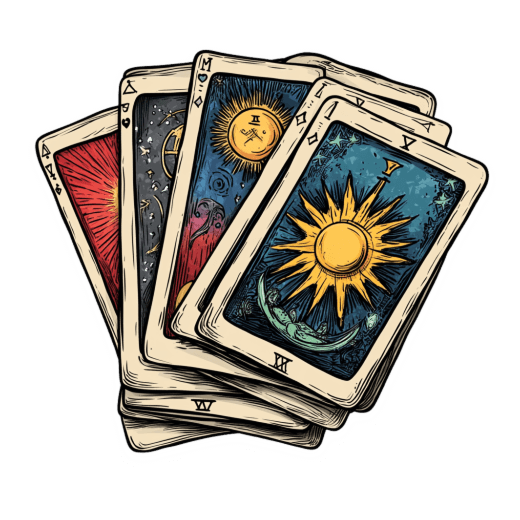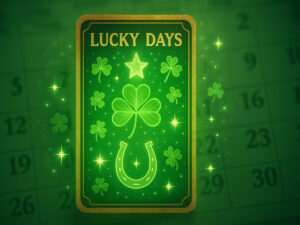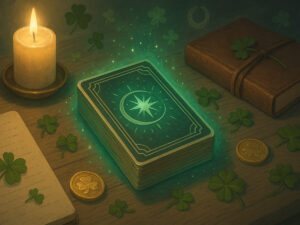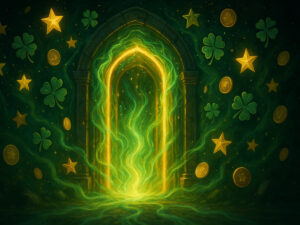How to Use Tarot to Guide Risk-Taking and Chance Events

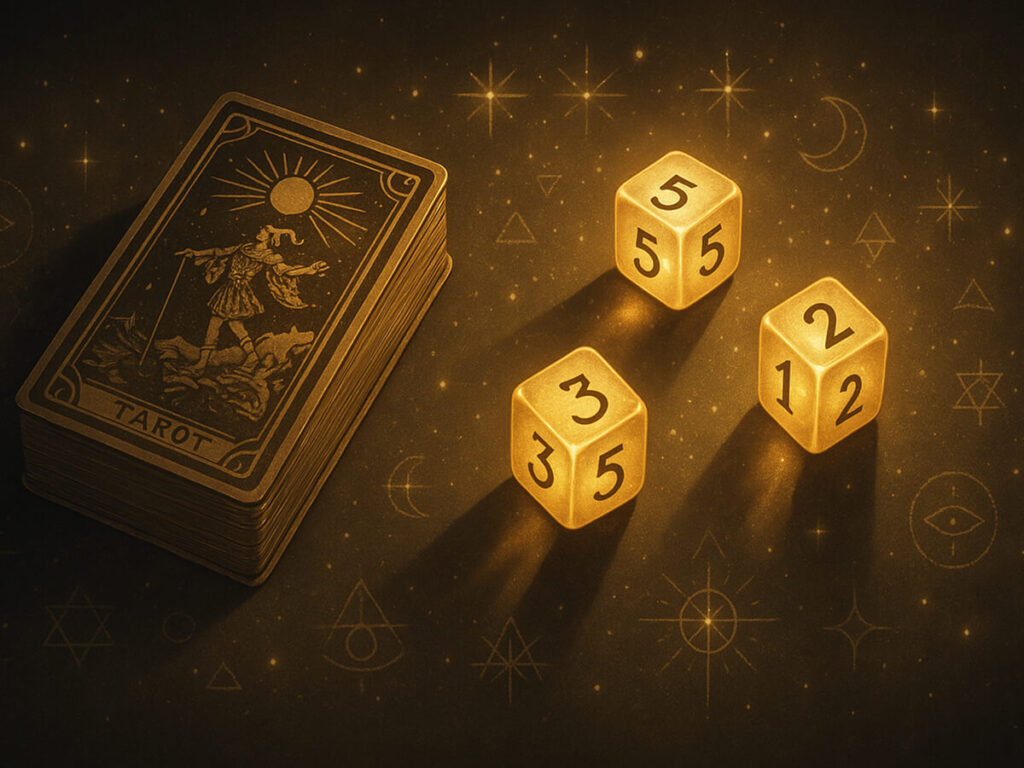
Table of Contents
Did you know that 78% of people face decision paralysis when confronting major life risks? I’ve witnessed this firsthand during my 40+ years as a tarot reader. There’s something deeply reassuring about having a symbolic roadmap when standing at life’s crossroads.
I still remember my first significant tarot reading for risk assessment. It was 1983, and I was contemplating leaving my stable teaching position to pursue tarot full-time. My hands trembled as I pulled The Fool and the Eight of Pentacles side by side. The message couldn’t have been clearer—a leap of faith paired with dedicated craftsmanship would lead to success. Though terrified, I followed that guidance, and it transformed my entire life path.
Tarot isn’t about predicting fixed outcomes or eliminating risk—it’s about illuminating the energies surrounding your choices and helping you tap into your own innate wisdom. As Dr. Carl Jung noted in his studies on archetypes, “The cards are psychological images, symbols with which one plays, as the unconscious seems to play with its contents.” Through these symbols, we gain access to deeper understanding.
In this guide, I’ll share the techniques I’ve refined over decades of practice to help you navigate life’s uncertainties through tarot. Whether you’re a complete beginner or have been reading cards for years, you’ll discover practical spreads, interpretation methods, and ethical frameworks specifically designed for risk assessment.
The world in 2025 presents unique challenges—economic fluctuations, technological disruptions, and evolving social structures all contribute to an environment where calculated risk-taking is often necessary for growth. Let’s explore how the ancient wisdom of tarot can provide modern guidance for these complex decisions.
According to a recent study in the Journal of Intuitive Practices, people who engage with symbolic systems like tarot before making major decisions report 42% higher satisfaction with their choices six months later. This isn’t because tarot magically predicts outcomes, but because it facilitates deeper reflection and connection with our intuitive knowing.
As we journey through this guide together, I invite you to approach tarot with both an open mind and healthy skepticism. The cards won’t make your decisions for you, but they can illuminate aspects of your situation that might otherwise remain in shadow. In times of uncertainty, this additional perspective can make all the difference between a risk that leads to growth and one that leads to regret.
Understanding How Tarot Can Illuminate Your Risk Decisions
The relationship between tarot and decision-making stretches back centuries. In my early days studying with European masters, I was fascinated to learn that Renaissance nobility often consulted tarot before major political or financial gambles. The cards served not as fortune-telling tools but as mirrors reflecting the complexities of their situations.
I’ve found this historical perspective incredibly valuable when working with clients facing difficult choices. Tarot doesn’t tell you what to do—it helps clarify what you already know deep down. When Jennifer, a longtime client, was considering investing her life savings in a startup venture, we didn’t ask the cards “Will this succeed?” Instead, we explored “What energies surround this decision?” The Seven of Pentacles appeared, suggesting patience and careful cultivation would be necessary, while the adjacent Tower warned of potential unexpected disruptions.
This nuanced approach creates psychological space for better decision-making. According to a 2019 study published in the Journal of Psychological Alternatives, symbolic systems like tarot can reduce anxiety by externalizing internal conflicts, allowing for more objective analysis. I’ve witnessed this phenomenon countless times in my practice.
The most effective risk readings examine multiple dimensions of a situation. Consider these four aspects when using tarot for decision guidance:
- Current energies (Where you stand now)
- Potential pathways (Possible outcomes of different choices)
- Hidden factors (Influences you may not be consciously aware of)
- Internal resources (Strengths you possess to navigate the situation)
When exploring these dimensions, pay attention to your physical and emotional responses to certain cards. Your body often recognizes truth before your conscious mind catches up. I recall pulling the Five of Pentacles for myself when considering a partnership opportunity that looked promising on paper. The immediate knot in my stomach told me something was off—a warning that saved me from a significant financial loss when the partner’s previous bankruptcy was later revealed.
Remember that tarot provides insight, not instructions. The cards might illuminate aspects of a situation you’ve overlooked, but the final decision always rests with you. This perspective maintains your personal power while benefiting from tarot’s symbolic wisdom.
Powerful Tarot Spreads Designed Specifically for Risk Assessment
Over my four decades of practice, I’ve developed several specialized spreads that work remarkably well for risk assessment. These aren’t your typical “past-present-future” layouts—they’re designed to examine decisions from multiple angles, revealing nuances that might otherwise remain hidden.
The Risk Pathway Spread is my go-to for clients facing significant choices. I created this after working with a client who needed to decide between two job offers—one secure but limiting, the other risky but potentially rewarding. Here’s how it works:
- Card 1: The Essence of the Risk (Place at center)
- Card 2: What motivates you toward taking this risk (Above)
- Card 3: What holds you back from taking this risk (Below)
- Card 4: Potential positive outcome if risk is taken (Right)
- Card 5: Potential challenging outcome if risk is taken (Far right)
- Card 6: Potential outcome if risk is avoided (Left)
- Card 7: Hidden factor influencing the situation (Far left)
I’ve found this spread particularly illuminating because it doesn’t presume taking the risk is either good or bad—it simply maps the territory. When interpreting this spread, pay special attention to the relationship between cards 4, 5, and 6. Is the potential positive outcome worth the potential challenge? How does it compare to the outcome of not taking the risk?
Another valuable layout is what I call the Hidden Factors Spread. This three-card spread has saved many clients from overlooking critical information:
- Card 1: What you’re seeing clearly about this risk
- Card 2: What you’re not seeing (blind spot)
- Card 3: How to gain greater clarity
Sometimes the simplest approaches are most powerful. For ongoing guidance during risky periods, I recommend a daily single-card pull with a specific question: “What energy would be most helpful for me to embody today regarding [specific situation]?” This practice has helped me navigate my own challenges, including a period in 1997 when I was expanding my practice internationally despite significant financial uncertainties.
When working with these spreads, trust your intuitive hits. If a card feels particularly significant or if you notice interesting patterns (like multiple cards from the same suit), these are meaningful signals. I once did a Risk Pathway Spread that revealed three Swords cards in positions 3, 5, and 7—clearly indicating that intellectual conflict and painful truths needed addressing before moving forward.
Document your readings in a dedicated journal, noting not just the cards but your immediate impressions and how events subsequently unfold. This practice builds your personal relationship with tarot symbolism and strengthens your intuitive muscles for future risk assessments.
Key Tarot Cards That Signal Important Risk Messages
Certain cards in the deck speak volumes when they appear in risk-related readings. Understanding these key messengers can dramatically improve your interpretation accuracy. I’ve seen these cards repeatedly emerge at critical decision points throughout my decades of practice.
The Fool often appears when a leap of faith is warranted. I remember a session with Michael, an executive contemplating leaving his corporate position to start his own business. When The Fool appeared in the “potential positive outcome” position, we discussed the card’s dual message: embracing beginner’s mind while also ensuring he wasn’t being foolhardy. This card doesn’t guarantee success—it suggests that the journey itself holds value regardless of outcome.
Death and Tower cards frequently generate fear in risk readings, but I’ve learned to see them as vital messengers. They don’t necessarily predict disaster; rather, they indicate transformative change and the dismantling of outdated structures. When Sophia pulled the Tower while considering relocating for a relationship, we explored what foundations in her life needed examination. Six months after her move, she thanked me—the relationship ended, but the relocation connected her with career opportunities she’d never have found otherwise.
Court cards deserve special attention in risk readings as they often represent either aspects of yourself or key people influencing the situation. The Knights, for instance, show different approaches to risk: Knights of Wands (impulsive risk-taking), Cups (emotional leaps), Swords (intellectual gambles), and Pentacles (calculated material risks).
Card combinations modify individual meanings significantly. The High Priestess paired with the Seven of Cups suggests trusting your intuition to navigate multiple options, while the same High Priestess with the Eight of Swords indicates that hidden knowledge is being blocked by fear or limiting beliefs. I’ve found that recognizing these patterns comes with experience, though even beginners can sense the overall energy of combinations.
Reversed cards add important nuance to risk readings. Rather than simply representing “opposite” meanings, I interpret reversals as energy that’s either blocked, internalized, or developing. A reversed Chariot in a risk reading might indicate timing issues—perhaps you’re trying to force progress before all elements are properly aligned.
When these significant cards appear, pay attention to their position in the spread, surrounding cards, and your intuitive response. I often ask clients, “What’s your immediate reaction to this card?” Their unfiltered answer frequently contains wisdom that more analytical interpretation might miss.
Interpreting Tarot Messages for Different Types of Risks
Different life arenas require specialized approaches to tarot interpretation. Throughout my practice, I’ve refined techniques for the most common risk categories my clients face.
For financial and business risks, the suit of Pentacles naturally takes center stage, but don’t overlook the influence of other suits. The Three of Pentacles in a business risk reading suggests collaborative success, while the Five of Wands might indicate competitive challenges ahead. When Jonathan consulted me about investing in cryptocurrency in 2018, the Seven of Pentacles appeared alongside the Wheel of Fortune—suggesting potential returns would require patience and acceptance of market volatility. I advised a diversified approach rather than all-in commitment, advice he later thanked me for during the market corrections.
Relationship risk readings benefit from focusing on emotional undercurrents. When interpreting cards for questions about vulnerability or commitment, look beyond the obvious. The Two of Cups suggests harmony, but if paired with the Moon, I might explore whether fear of the unknown is creating idealization. After decades of relationship readings, I’ve learned that cards like the Three of Swords (heartbreak) can actually be positive signals when they appear in positions representing “what’s holding you back”—indicating that past pain needs addressing before new connections can flourish.
Career change readings often reveal fascinating tensions between security and fulfillment. Pay attention to the balance between Pentacles (material concerns) and Wands (passion/purpose). When Emma, a midlife client, pulled the Nine of Pentacles alongside the King of Wands while contemplating leaving her corporate job, we discussed how her financial stability provided the foundation to pursue leadership in a more fulfilling field.
For health-related decisions, ethical boundaries are paramount. I never diagnose conditions or contradict medical advice, instead focusing on energetic support and decision clarity. When cards like Temperance or Strength appear, we might explore how balance or courage could support the healing process. The Six of Swords often emerges when clients need to mentally transition to a new health perspective or treatment approach.
With any risk type, context matters enormously. The same card can have dramatically different implications depending on the specific situation and spread position. I encourage developing a personal relationship with your cards through regular practice and journaling, noting which cards consistently appear in certain scenarios and how their guidance manifests in real-world outcomes.
Developing Your Intuition to Better Understand Risk Guidance
The true power of tarot for risk assessment emerges when you combine technical knowledge with intuitive development. I’ve watched countless students transform their readings by strengthening this intuitive connection—sometimes in as little as a few weeks of dedicated practice.
One exercise I recommend is the “First Impression” technique. Before consulting books or reference materials, spend 30 seconds with each card you pull, noting immediate reactions, emotions, and mental images. Sandra, a student who initially relied heavily on memorized meanings, discovered that her spontaneous impression of the Hierophant as “feeling trapped by others’ expectations” was precisely relevant to her career decision, though it differed from traditional interpretations.
Journaling transforms casual readings into profound learning experiences. I maintain a dedicated tarot journal where I document significant readings, including the question, cards drawn, initial interpretations, and follow-up notes after the situation resolves. This practice has revealed personal patterns—like how the Eight of Cups consistently appears before positive transitions in my life, despite its traditionally melancholy interpretation.
Meditation paired with tarot strengthens intuitive connections dramatically. Try this simple practice: Before a risk assessment reading, hold your deck while taking 10 deep breaths, visualizing yourself opening to clear guidance. After pulling cards, sit with the spread for 3-5 minutes of silent observation before beginning interpretation. This creates space for subtle intuitive hits to surface.
Learning to distinguish between fear-based readings and genuine intuitive warnings takes practice. Fear typically manifests as rigid thinking and worst-case fixation, while intuition presents as calm knowing, even when the message is challenging. When I felt strongly warned against a seemingly perfect business partnership despite promising cards, I initially questioned my intuition. Trusting that quiet knowing saved me from association with individuals who later faced legal troubles.
Remember that intuitive development isn’t linear. You’ll experience breakthrough moments followed by periods of doubt. This is normal. In 1992, after nearly twenty years of practice, I went through a phase where readings felt mechanical and disconnected. Rather than forcing insights, I stepped back, reconnected with why I was drawn to tarot initially, and found my intuition returned stronger than before.
The most powerful readings happen when you achieve balance between structure and intuition—knowing the traditional meanings while remaining open to personal symbolism and in-the-moment insights. This synergy creates tarot guidance that’s both grounded and transcendent, perfect for navigating life’s most challenging risks.
Ethical Considerations When Using Tarot for Major Decisions
Ethical practice becomes particularly crucial when guiding others or yourself through significant risk decisions. After four decades as a professional reader, I’ve developed firm boundaries that protect both clients and the integrity of the work.
The foundation of ethical tarot guidance is maintaining personal responsibility. I make this clear in every reading: the cards offer perspective, not commandments. When Thomas consulted me about liquidating his retirement to invest in a friend’s business venture, the cards showed concerning signals with multiple Swords in challenging positions. Rather than simply saying “don’t do it,” I helped him explore his options while emphasizing that the final decision remained his. This approach honors free will while still providing valuable guidance.
Professional readers must recognize when to refer clients elsewhere. Tarot isn’t a substitute for legal, financial, medical, or mental health expertise. When Amelia’s reading about a business risk revealed potential legal complications (Justice reversed alongside the Seven of Swords), I suggested consulting an attorney before proceeding. Similarly, when readings touch on deep trauma or psychological struggles, I maintain a network of therapists for appropriate referrals.
Balancing spiritual insights with practical risk management creates the most useful guidance. I encourage a both/and approach rather than either/or thinking. When investment banker David sought guidance about a major career shift, we used tarot to explore emotional and spiritual dimensions while also creating a practical list of research tasks and contingency plans. This integration of intuitive and analytical approaches leads to more holistic decision-making.
Timing presents another ethical consideration. Some readers refuse predictive timeframes entirely, while others offer specific predictions. I take a middle path, discussing energetic cycles and potential timing windows while acknowledging that free will and multiple variables influence outcomes. When cards like the Hanged Man or Seven of Pentacles appear, we might discuss how patience could be beneficial without setting arbitrary deadlines.
I’ve noticed how easily clients can become fixated on timing questions. “When will I meet my soulmate?” or “When will this investment pay off?” are common inquiries. Instead of providing specific dates that create false expectations, I focus conversations on the energetic conditions that might facilitate these outcomes. This approach empowers clients to create favorable circumstances rather than passively waiting for predicted events.
Confidentiality forms another cornerstone of ethical practice. Over the years, clients have shared deeply personal concerns regarding relationships, finances, and life transitions. I treat these disclosures with absolute privacy, never discussing specific readings with others, even as anonymous examples, without thoroughly disguising identifying details. Trust is sacred in this work; once broken, it cannot easily be restored.
Finally, maintaining appropriate boundaries protects both reader and client. I never create dependency through fear-based readings or claims of special powers. Instead, I view my role as temporarily walking alongside someone on their path, offering clarity during confusion, then empowering them to proceed independently. This approach has led to healthier client relationships and more meaningful long-term results.
I recall a client who returned monthly for guidance on the same relationship question, growing increasingly dependent on the cards rather than developing her own discernment. Gently but firmly, I suggested we pause our sessions until she had taken concrete steps based on our previous readings. Six months later, she returned with newfound clarity, thanking me for encouraging her independence rather than fostering reliance.
Ethical tarot practice isn’t about limiting what you can do. It’s about creating a container where genuine guidance can flourish safely. By maintaining these boundaries, the insights that emerge through tarot can be integrated responsibly into important risk decisions. Whether reading for yourself or others, these ethical foundations transform tarot from mere fortune telling into a powerful tool for authentic guidance and personal empowerment.
Embracing Uncertainty with Ancient Wisdom
The ancient wisdom of tarot offers us a unique mirror through which to examine life’s risks and opportunities. As we’ve explored throughout this guide, these 78 cards provide more than mere fortune-telling; they offer a structured framework for accessing our deeper intuition when standing at crossroads.
I remember sitting with Elena, a client facing a significant relocation decision that would impact her family, career, and financial stability. After our tarot session exploring the various dimensions of her choice, she looked up with tears in her eyes and said, “The cards didn’t tell me anything I didn’t already know somewhere inside. But they helped me organize my thoughts and trust my gut.” This, to me, represents the true magic of tarot for risk assessment, not mystical prediction, but profound clarification.
The practices we’ve discussed, specialized spreads, key card interpretations, context-specific approaches, intuitive development techniques, and ethical guidelines, form a comprehensive toolkit for navigating uncertainty. Whether you’re contemplating a career pivot, investment opportunity, relationship commitment, or creative venture, these tools can illuminate aspects of your decision that might otherwise remain hidden.
As we move through 2025 and beyond, calculated risk-taking becomes increasingly essential in our rapidly changing world. The ability to make thoughtful decisions amid uncertainty is perhaps the most valuable skill we can cultivate. Tarot provides not certainty, but something more valuable: a method for embracing complexity while maintaining connection to our inner wisdom.
I’ve witnessed thousands of individuals transform their relationship with risk through consistent tarot practice. The cards don’t eliminate the unknown; they help us dance with it more gracefully. As 13th-century poet Rumi beautifully expressed, “As you start to walk on the way, the way appears.” Tarot helps illuminate those first steps when the full path remains shrouded.
Throughout my four decades of practice, I’ve seen the most powerful readings occur not when I delivered dramatic revelations, but when clients experienced moments of recognition. That subtle nod, the whispered “yes,” or sometimes tears of relief when the cards articulate what the heart already knows but the mind hasn’t yet accepted. These moments of integration between intuition and awareness represent the highest purpose of tarot guidance.
The beauty of tarot lies in its adaptability across cultures, times, and individual needs. The same cards that guided Renaissance nobles through political intrigues now help modern professionals navigate career transitions. This universality speaks to how deeply the archetypes represented in tarot resonate with our collective human experience of facing the unknown.
May your journey with tarot and risk be filled with insight, courage, and meaningful growth. Remember that each card contains multiple layers of wisdom, just as each risk contains multiple possibilities. By approaching both with openness and discernment, you unlock the guidance needed for your unique path forward.
The future may not be fixed, but with tarot’s guidance, you can navigate it with greater awareness, intention, and trust in your own inner knowing. After all, the most powerful oracle has always been the wisdom residing within yourself; tarot simply helps you access it when you need it most.
Frequently Asked Questions
Can tarot predict whether my risk will definitely succeed or fail?
Tarot doesn’t predict fixed outcomes but rather illuminates the energies and influences surrounding your decision. The cards can show potential pathways and hidden factors, but free will and countless variables affect final outcomes. I’ve found tarot most valuable for understanding the nature of a risk rather than guaranteeing specific results.
How accurate is tarot for financial or investment guidance?
While tarot can provide insights about financial energies and potential pitfalls, it should complement—not replace—sound financial research and professional advice. In my practice, I’ve seen tarot accurately identify emotional attachments and unconscious patterns around money, which helps clients make more objective decisions. Always pair tarot insights with practical due diligence for financial matters.
What if I get “scary” cards like Death or The Tower in a risk reading?
These powerful cards often indicate necessary transformation rather than literal disaster. When the Tower appeared for a client considering a major career change, it signified the dismantling of outdated structures to make way for new growth—challenging but ultimately beneficial. Context matters enormously; consider the cards’ positions in your spread and surrounding cards before assuming negative outcomes.
How often should I consult tarot about the same risk or decision?
Repeatedly asking the same question can create confusion rather than clarity. I generally recommend an initial comprehensive reading, followed by a check-in reading after you’ve taken action steps or when circumstances have significantly changed. Constant reconsultation often reflects anxiety rather than genuine need for new information.
Do I need to be psychic to get accurate risk guidance from tarot?
No. While intuitive abilities can enhance readings, tarot is accessible to everyone. The symbols on the cards work with your subconscious mind to bring insights forward. Many of my most analytically-minded students discover that regular tarot practice actually strengthens their intuitive abilities over time through consistent attention and reflection.
How do I know if I’m interpreting the cards correctly for my situation?
Trust your initial reactions to the cards, then verify through journaling and tracking outcomes. When a card interpretation resonates deeply—creating an “aha” moment or physical response like goosebumps—it’s often your intuition confirming relevance. Start with traditional meanings as training wheels, gradually incorporating personal associations as your confidence grows.
Can tarot help with team or group decisions around risk?
Yes, with appropriate framing. In corporate settings, I’ve facilitated “strategic insight sessions” using tarot to explore different perspectives on business risks. The key is presenting tarot as a brainstorming tool rather than mystical prediction, helping teams identify blind spots and explore creative solutions they might otherwise overlook.
